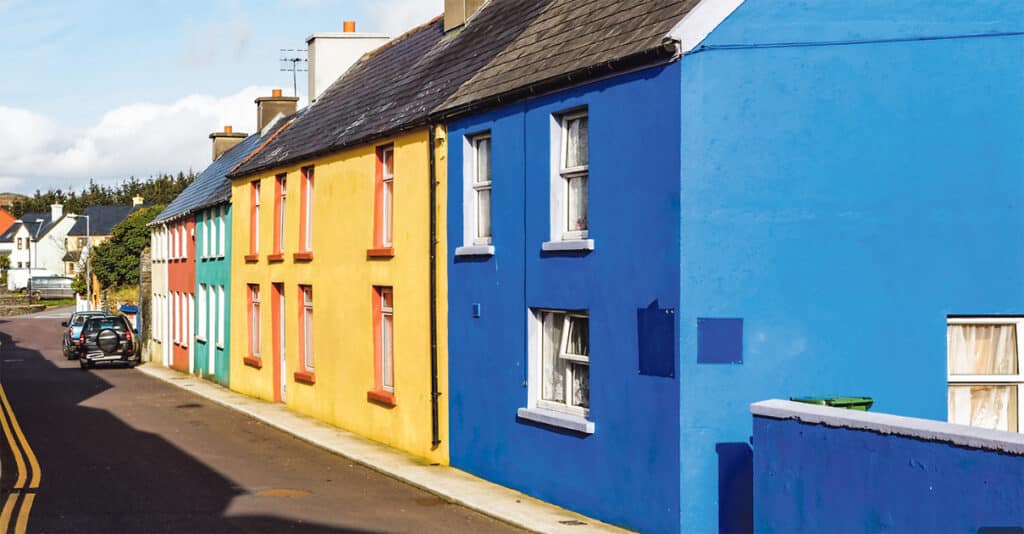
There are no two ways about it, upgrading your home is expensive. The Sustainable Energy Authority of Ireland, (SEAI) offers financial support via a number of grant schemes but it only really covers 30-50 per cent of the cost, leaving a sizeable balance which homeowners need to fund form their own pocket. In my work as a technical assessor, I meet many clients who are very keen to upgrade their home but don’t have tens of thousands sitting in the bank to pay the remaining cost after grants. This is a major obstacle for people who wish to upgrade their homes, in fact a recent consumer research by Permanent TSB, (PTSB) found that only 20 per cent of homeowners are prepared to complete an upgrade at their own expense, while this increases to 65 per cent if assistance is available.
On April 24, Minister Eamonn Ryan announced the long-awaited new low-cost Home Energy Upgrade Loan Scheme. The €500 million scheme is delivered by the Strategic Banking Corporation of Ireland (SBCI) and guaranteed by the European Investment Bank Group (EIB), so the loan won’t be secured against your property, like a mortgage.
Under the scheme, homeowners and small landlords can borrow from €5,000 to €75,000 over a term of up to 10 years at rates similar to a mortgage. The loan can be used to complete a whole house deep upgrade or just for one or two individual items such as external wall insulation or fitting a heat pump. Only 75 per cent of the loan value must be spent on the energy-efficient upgrade, the remaining 25 per cent can be spent on associated work such as redecoration. The upgrade needs to be availing of an SEAI grant. There is no requirement to meet a B2 energy rating after the work is completed, but the upgrade does need to result in a 20 per cent improvement in your BER grade.
The process for the scheme seems quite straightforward:
• Contact an SEAI registered One Stop Shop, Community Energy Provider or Energy Partner who needs to be used to complete the work
• They complete a ‘Home Energy Summary Report’ identifying the work to be completed and estimated cost
• Engage with a registered lender and apply using your Home Energy Summary Report
• Once you have approval you can draw down the funds and start work
It’s worth noting that there are some exclusions, for example, solar PV installations are not eligible as an individual measure but can be included as part of a large upgrade.
One shortcoming I can see of the scheme is the requirement for applicants to use a SEAI registered One Stop Shop, community Energy Provider or Energy partner. I find these organisations are better suited to larger deep upgrades where the homeowner would like a fully managed service. For people who wish to just complete a couple of items, for example cavity and attic insulation of an air to water heat pump, working directly with an individual, (SEAI registered) contractor would make more sense and probably work out more cost effective.
At the time of writing, PTSB is the only lender to offer loans through the scheme at rates as low as 3.55 per cent, significantly below the previous personal home improvement loans on the market which could be from six to seven per cent and up to 14 per cent. Many of the other major lenders are expected to enter the market shortly.
So what would the repayments look like for a typical home upgrade and how much of this would be offset by fuel bill savings? To look into this we have taken an example from the West Cork Community Home Energy Retrofit Information Service, (CHERIS) energy master plan, (EMP) project.
As part of the CHERIS EMP several case study home upgrade plans were produced, based on the most prevalent home types in the area. I have taken an example from the CHERIS case studies, which I also come across often in my work; a detached farmhouse built in 1915 with an oil boiler. Four upgrade options were included in the case study, two of which I have used for the example below; a shallow upgrade focusing on the low-hanging fruit and a deeper upgrade including more advanced insulation and a heat pump.
Looking first at the shallow upgrade, which includes: Attic insulation; Basic draught proofing; Zoned heating controls; LED lighting; High-efficiency wood stove.
The result of the upgrade improves the BER from an E1 to D1 (25 per cent improvement) and is estimated to save about €1,100 per year on fuel bills. Total net cost of the work is €11,377 after SEAI grants of €2,200 under the individual grant scheme. Assuming this was borrowed over five years at an APR of 4.6 per cent, the total amount repayable would be €12,757, or €2,551 per year, almost half of this would be covered by the fuel bill savings alone.
The second option is a deep upgrade with heat pump, including: Attic insulation; External wall insulation; Double glazed windows and new doors; Basic draught proofing; Improved ventilation; LED lighting; High-efficiency wood stove; Air to water heat pump.
The result of the upgrade would improve the BER from an E1 to B1, (75 per cent improvement) and is estimated to save about €2,850 per year on fuel bills.
The total net cost of the work for the deep option is €48,766 after SEAI grants of €24,800, working with a registered one-stop shop. Assuming this was borrowed over 10 years at an APR of 3.9 per cent, the total amount repayable would be €58,970, or €5,897 per year, again almost half of this would be covered by the fuel bill savings alone. As a bonus, if the property was mortgaged, most lenders offer a lower rate for homes B-rated and above. Bank of Ireland also recently launched its new EcoSaver green mortgage. As your BER goes up from G-A the rate goes down by roughly 0.05 per cent per change in grade BER grade. This could potentially save another €300 off interest paid annually.
One final comment, these examples are all based on current fuel prices, which are only likely to go up in the future making payback potentially more attractive.



